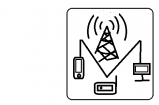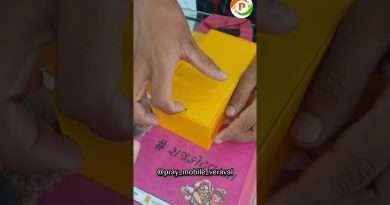FM Radio Station ANTENNA ARRAY FM Transmitter Set Up. Get It Right For Best Signal Quality.
How to build FM radio station antenna array. A 2 stack and 4 stack FM dipole antenna arrays. Boost your FM signal of your radio station with multiple dipole antennas. Without all the scary technical equations and antenna design theory, you can build your own FM dipole antenna array.
#fmantenna #fmtransmitter #transmitter #fmbroadcast #pirateradio #piratebroadcast #fmradio #radiostations #antennahack #broadcasting #broadcast
A great way to increase your radio station signal power is to build multiple antenna stacks otherwise known as an antenna array. Today we look at FM transmitter antenna arrays that you can build yourself. We look at how it’s done, what parts are needed, and when to avoid building an antenna array.
If you do some research on FM antenna array construction you will go down a rabbit hole of technical theory that you may never make it out of. The theoretical study of antenna arrays is one of the most complicated and often confusing forms of engineering around.
This video intends to give a simpler explanation and some practical ways to build antenna arrays without having to rack your brain with complicated equations and theories.
When most newcomers to building radio stations decide to build an array it is because their transmitter does not provide enough power so it needs to be increased by adding more antennas. In some cases, people simply want to run the transmitter at a lower power level to extend the life of the transmitter. Whatever your reason, the antenna stack or array can double and quadruple the output power of the FM transmitter. This is by using a two-stack and a 4 stack. In theory, it is possible to build even bigger stacks such as an 8 stack but it actually becomes impractical beyond 4 antennas because of the sheer size of the antenna stack. A 4-stack antenna is at least 8 times the size of a single antenna length.
Unless you have a massive antenna mast that is completely vertical, this is not the way to go. You would be better off buying a transmitter that is more powerful.
Let’s look now at building a simple two-stack antenna array. The parts you will need are two antennas, a pole at least 4 times the length of the antenna, and the most important part is what is known as a harness. This is essentially a few pieces of coaxial cable joined together.
You may be wondering what this strange collection of wires does. To understand the importance of the harness we first need to see how the antennas are connected together and how they work together in unison to amplify the radio signal. When two antennas fire off the radio signal at the same time, at a certain point the two signals will intersect. It is where these signals intersect that the signal can be amplified by adding the two signals together or cancelled out by the two signals being in opposite polarity when they meet.
In the 2-stack antenna array, the FM dipoles are spaced half a wavelength apart. To understand why we can draw a full wavelength across the antennas. As you can see, at exactly a half wave spacing, the two antennas are at the exact same polarity at the same time. This is when the two signals can work together but if you feed the two antennas out of phase they will not be working together even if they are spaced correctly because when for example the positive part of the wave reaches the one antenna, the negative part will reach the other antenna because the radio signal has further to travel along the cable to the second antenna. To fix this we use a harness that is two quarter wavelengths long. This allows the radio signal to reach both antennas at the same time. These cables must not be tuned or adjusted but simply connected to each antenna. You could make these cables yourself but most people have found it simply easier to buy premade harnesses as getting the impedance matching right is very difficult. They are not tuneable so in essence as long as the lengths of the two arms of the harness are exactly the same length and approximately a quarter of a wavelength long they can work together. You can simply place a T-Piece cable adaptor where all three cables intersect, creating the harness as a big t-piece cable. This is simple enough for a two-stack array but a little more complicated for a four-stack but we will get to that in a minute.
Something important to mention here is when you are setting up your antennas. The spacing between the dipole antennas and the pole they are mounted on needs to be exactly a quarter wavelength. The reason for this is that the reflection from the pole can help or hurt your signal. At exactly a quarter wavelength spacing the reflected signal from the pole can add a dB or two of gain but if the spacing is wrong it can actually cancel out some of your signal.
Views : 27119
antenna




